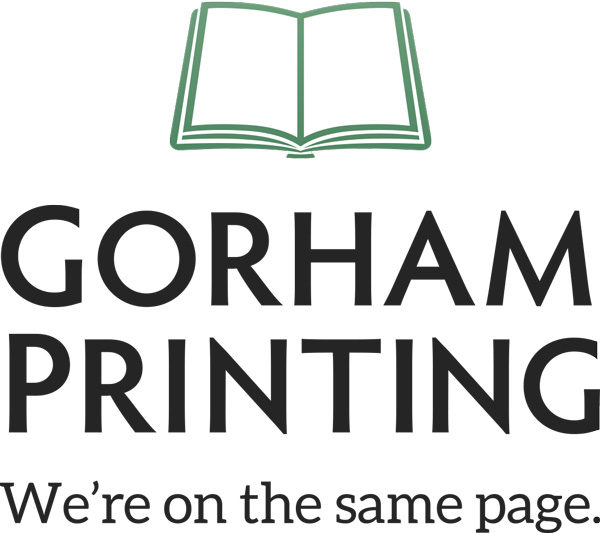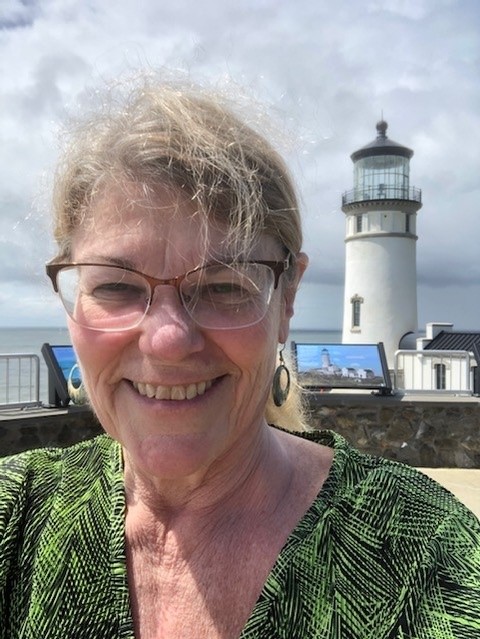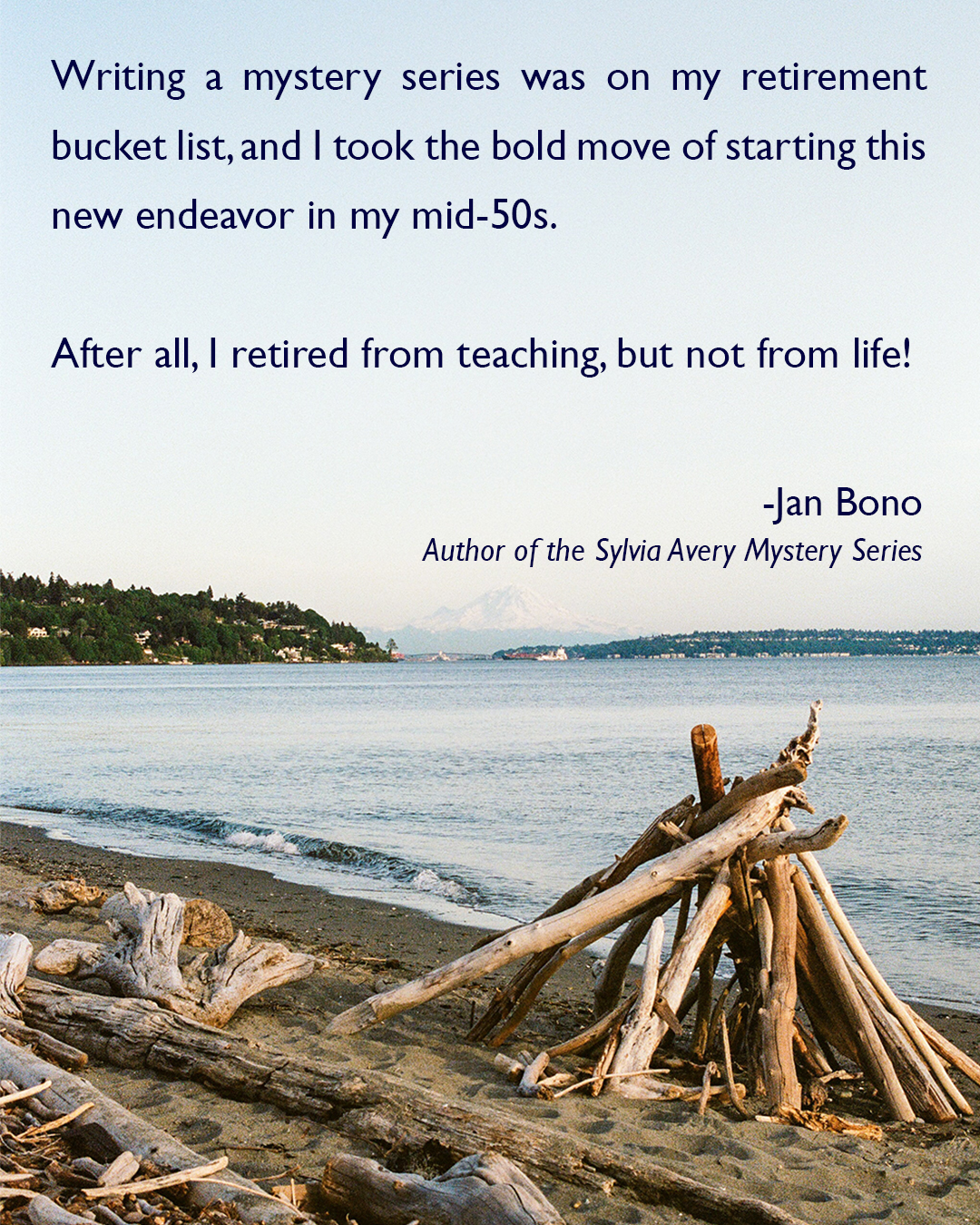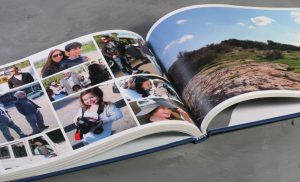After retiring from teaching in 2006, Jan Bono began to write—and she hasn’t stopped since! Author of the six book Sylvia Avery series, Jan is also a prolific Chicken Soup for the Soul contributor and has been published in the series over 45 times, making her one of the top worldwide contributors. We love working with Jan, and recently asked her to share with us a little about her printing experience.
Gorham Printing: You’ve recently completed the sixth book of your Sylvia Avery Mystery series. Can you tell readers a little about the series and what you wanted it to represent?
Jan Bono: Sylvia Avery is a middle-aged, fairly active woman who took early retirement on the North Beach Peninsula. She often finds herself tangled up in her friends’ lives, particularly when they’ve got trouble on their hands. Fortunately, Syl has a mind for mystery, and contributes quite a bit to solving the crimes that take place all around her—whether drug running, recent or cold-case murders, robbery, insurance fraud, kidnapping, and the like.
I’ve always loved reading mysteries, particularly “cozies,” and often I find myself wondering “What if” the events in the books, or even in real life, had happened a little differently. After 30 years in the classroom, I wanted to try my hand at making the community I live in a backdrop for the stories I had rolling around in my head. Writing a mystery series was on my retirement bucket list, and I took the bold move of starting this new endeavor in my mid-50s. After all, I retired from teaching, but not from life!
GP: Did your writing process change significantly from the first book to the sixth?
JB: The process? Not at all. My writing? Well, I like to think I improved as I wrote along! But my process did get a lot more detailed. Since the fall is my Season of Selling at holiday bazaars and craft fairs, I start most books in January by typing up all the notes and reading and summarizing my thick file of research. February is dedicated to writing a thorough synopsis. My definition of “thorough” has evolved from 18 to 20 single-spaced pages to over 40 pages for the last few books! Then I walk away for several weeks and leave the synopsis alone.
Between mid-March and mid-April, it becomes TIME TO WRITE! And although I have a very complete story summary, that doesn’t mean it can’t change, and often does! Characters I thought were only around for one book worked their way into my heart and I couldn’t bear not to carry them into the next book or two or even three! I’ve even changed “the bad guy”—twice—because I changed my mind about his or her intentions as I wrote. The synopsis is never in stone, but it helps me know where I’m eventually headed as I write.
GP: How long did each book take to write and edit?
JB: When I’m ready to start writing in earnest (about three months into the research and summary writing), I’m like a dog worrying a bone. I write first thing in the morning, every morning, and don’t quit till I have at least 1,000 words. Some days I just can’t pull myself away from the computer, and during the writing of Book 6, I wrote 1,500 daily words minimum, and on my most productive day I put down over 3,500 words!
When it’s my best effort at a first draft, I send it off to four or five friends to proof/edit/comment on it. And I only give them two weeks! I compile their notes, make corrections as necessary, and send it to my final reader, who somehow always manages to find another 20 or so things for me to review!
I like to say that the first book took me 31 years to write, but after that, it got much faster! HA HA! The last three books took 42, 42, and 39 days at the keyboard, but that was working from a very detailed synopsis. And it was so much fun! Then off to my proofer team (I had almost 30 people offer to help, but chose 5 or 6 readers for each book, and no one except my final reader read more than two first drafts). Then off to the printer! Start to finish, I averaged 5 to 6 months from first day of work to holding the finished product in my hand.
GP: How do you prepare your books for printing?
JB: I’m far from a computer geek, but there are some important things I’ve learned about formatting along the way. The Gorham Printing Manual was my bible in the beginning, but I also found that once I visualized the finished product, I could make it look on paper the same way it looked in my imagination! The manual clearly delineated the necessary components, and a retired teacher can certainly follow a lesson plan, but I also put different headers on alternate pages, chose my own font, and decided that 12-point, although it costs more to print more pages, was easier on “mature eyes,” and my regular reads are grateful for that! Then, after my proofreading team was finished with it, I made the corrections and sent the polished interior text folder to Gorham as a PDF with fingers crossed.
GP: We’ve been able to partner with you to do design work on the Sylvia Avery book covers. What was the design process like for you? What made you decide to work with a designer?
JB: Once my text was complete, I settled down to write the back of the book blurb, the author bio, take the selfie for my author photo, acquire an ISBN, and find—or take—a photo for the wrap-around cover. All these pieces went into another file for the book designer’s help, as I don’t know how to work photoshop, and I’m grateful I don’t need too! I worked with a designer’s HELP. I was glad there was an option between having it done for me, and doing it all on my own! The designer got all the pieces, and since I worked with the same one for the last four books, I greatly appreciated the fact that she soon learned to read my mind, and see my vision as I did. We communicated through emails, and I truly love the results of all our collaborations, without reservation. She made proofs that always surprised me, adding touches I hadn’t thought of, but that always looked fabulous!
GP: These books take place on the Long Beach Peninsula, where you live. What is it like writing about the place you live? How do your surroundings inspire you?
JB: On page 5 of each book is a map of the fictitious “North Beach Peninsula.” And yes, it looks just like the Long Beach Peninsula, in the SW corner of Washington State, but I’ve changed the names of the towns, bays, lighthouse, and other important landmarks, businesses, and features. In my series, Ilwaco, on the southern end, became Unity, which is actually what Ilwaco was briefly called at the end of the Civil War. Long Beach was founded by the Tinkers, and was Tinkerville for many years, but in my books it’s Tinkerstown. Oysterville has been replaced by the now-defunct community of Willoopah, which I moved across the bay to suit my purposes!

The Clamshell Motel was once the Tide Motel, a bit south of Cranberry Road, and the High Tides Burger Bar is still our long-time Corral Drive-In. Sadly, the Long Beach Coffee Roasters, which I renamed the Sandy Bottom Coffee Cup, is no longer in business, but my Buoy 10 Bakery, now Dylan’s Cottage Bakery, is right there in downtown Long Beach, and still makes the best pastries to eat while solving crimes anywhere on earth! My all-time favorite fictional restaurant name is Cinco Amigos’ Chinese Cuisine! In my first book, five Mexican friends decided to open an ethnic restaurant, but realized the local need was for Chinese instead of another Mexican food stop, and I let them take over the real-life Chen’s location. The name came to me when I thought about Five Guys Burgers and Fries, and I love the way people respond when first encountering Cinco Amigos’ Chinese Cuisine.
I’ve included aspects of the Crab Pot Tree Lighting, the Blues Festival, the Boardwalk, and many other true area events in my locales. Those things are real, but the Spartina Point Casino and Resort name is making a glamorous joke of spartina, which is actually a noxious weed that has been eradicated from Willapa Bay, or Shallowwater Bay, if you prefer! And The Veiled Rainbow, a geriatric belly dancing troupe, certainly exists, but not under that name. As I’ve said, writing is unlimited creative fun!
GP: Now that the Sylvia Avery mysteries are complete, what’s next on the horizon? Will you start a new cozy mystery series?
JB: A cozy series has no graphic violence, no obscene language, and no explicit sex scenes. It has an amateur sleuth working with the police department in a small town, quirky characters, and lots of laughs. When I finished the series, I already had a couple books in mind, just begging to be written. But the first on the list wasn’t in my usual “humorous” style, and I wasn’t sure if I was up to the task of writing more dramatically, with suspense and tension and all that I’d need to write a solid true crime, which I’ve been sitting on for 25 years. I will write it, but that book is now second on my list, as I “practice” writing drama! The practice book will end up being 8 or 10 short stories about how women ON THE PENINSULA are able to get away with bumping off their husbands or boyfriends in unusual ways! This will be my transitional book, and then I’ll tackle the harder one. That’s my plan at this moment! And yes, Gorham will be printing this one too. Gorham has printed 12 of my 15 books, and I see no reason to do it any other way!
GP: Where can readers find out more about you and your books?
JB: This darn pandemic has certainly thrown a wrench into my marketing plan! Whereas I usually sell the majority of my books at holiday bazaars in the fall, I’m now focusing on online sales. If you live within 25 miles of Long Beach, I can meet you at a public place in your area to deliver them, but any farther has to go through the mail. My website, where you can read a short synopsis of each book, is www.JanBonoBooks.com. There are several ways to contact me through the website, and I answer all inquiries. If you get the recorder, please leave a message! But first, check out my body of work at JanBonoBooks.com. Got it? Thank you! And thanks to Gorham for this opportunity to tell you about my Sylvia Avery Mystery Series! I couldn’t /wouldn’t have done it without them!






